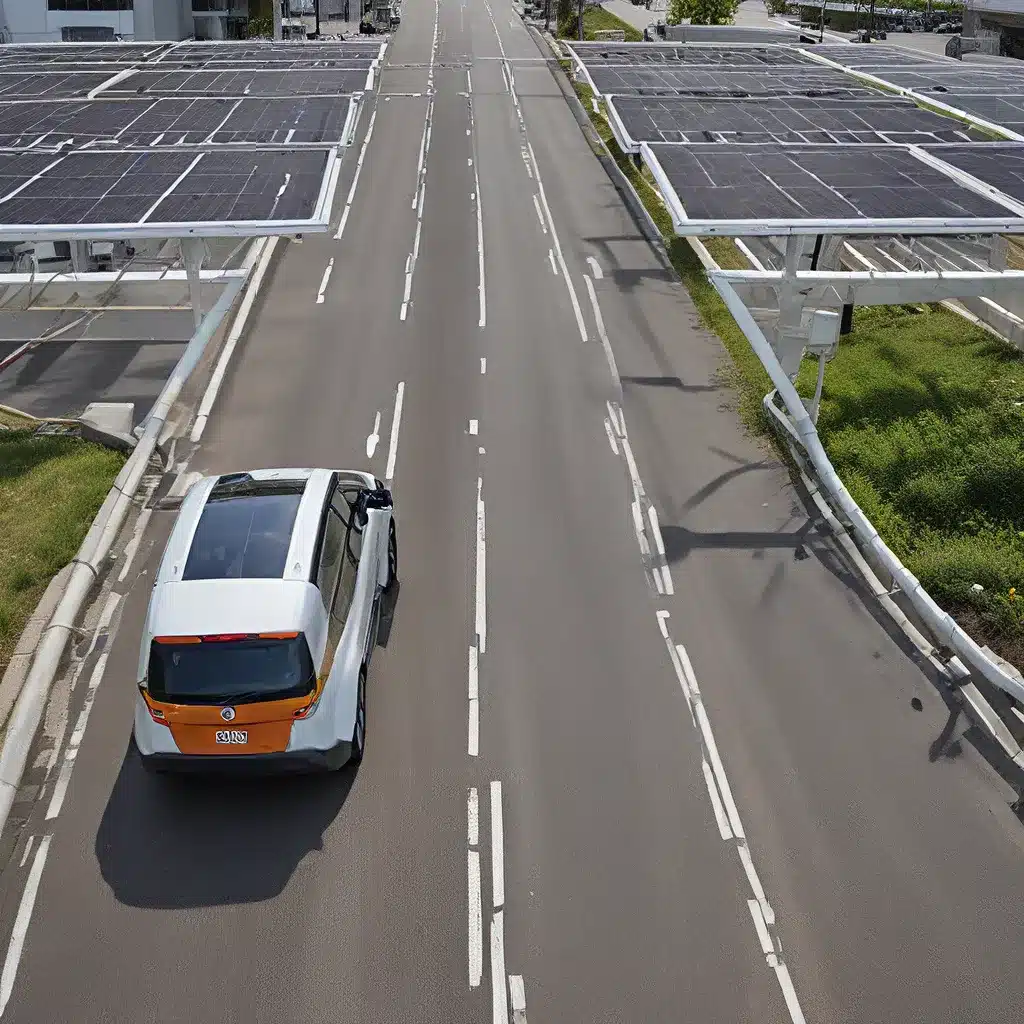
As a passionate advocate for renewable energy solutions, I’ve been closely following the rapid advancements in electric vehicle (EV) technology and their potential to transform our transportation landscape. One of the most exciting developments in this space is the growing integration of EVs with the power grid, a symbiotic relationship that holds the key to a more sustainable future.
The EV Revolution: Driving Towards a Greener Tomorrow
I’ll never forget the first time I test-drove an electric vehicle. The instant acceleration, the near-silent operation, and the sheer power under the hood – it was a revelatory experience that left me exhilarated and convinced that EVs are the way of the future. As global EV sales continue to soar, it’s clear that consumers are increasingly embracing this revolutionary technology.
But the true game-changer lies in the potential for EVs to become an integral part of the power grid. By leveraging the energy storage capabilities of EV batteries, we can create a more resilient and efficient electrical infrastructure that can help us overcome the intermittency challenges associated with renewable energy sources like solar and wind.
The Grid-EV Synergy: Powering the Future
Imagine a scenario where your electric vehicle’s battery is not only powering your daily commute but also serving as a distributed energy storage unit, feeding excess electricity back into the grid when demand is high and drawing from the grid when demand is low. This bidirectional flow of energy, known as vehicle-to-grid (V2G) technology, has the potential to revolutionize the way we generate, distribute, and consume electricity.
By integrating EVs into the grid, we can help smooth out fluctuations in renewable energy supply and improve the overall efficiency and reliability of the power system. When the sun isn’t shining, or the wind isn’t blowing, EVs can step in and provide the necessary energy to maintain a stable grid. Conversely, when there is a surplus of renewable energy, EVs can absorb that excess, acting as energy storage units and preventing potential waste.
This symbiotic relationship between EVs and the grid can also have significant financial implications for both consumers and utility providers. By participating in demand-response programs and earning credits for feeding energy back into the grid, EV owners can potentially offset the cost of charging their vehicles, making the switch to electric transportation even more appealing. And for utility companies, the integration of EVs can help them better manage their load, reduce the need for expensive grid upgrades, and ultimately pass on those savings to their customers.
Overcoming the Challenges: Building a Smarter, Greener Grid
Of course, transitioning to a fully integrated EV-grid ecosystem is not without its challenges. One of the primary hurdles is the need for robust and standardized charging infrastructure. Widespread deployment of fast-charging stations, both at home and in public spaces, is essential to ensure that EV owners have the confidence and convenience to embrace this technology fully.
Additionally, the integration of EVs into the grid requires complex coordination and communication between utility providers, EV manufacturers, and policymakers. Developing a seamless and secure system for bidirectional energy flow, as well as ensuring proper incentives and regulations, will be critical to the success of this endeavor.
But I’m optimistic that these challenges can be overcome. Significant investments and research are being made to address these issues, and I’m confident that with the right strategies and collaboration, we can create a future where EVs and the power grid work in perfect harmony.
The Road Ahead: A Sustainable Mobility Landscape
As I look to the future, I can’t help but feel a sense of excitement and possibility. The integration of electric vehicles into the grid is not just a technological advancement, but a pivotal step towards a more sustainable and resilient energy ecosystem. By harnessing the energy storage potential of EV batteries, we can unlock new possibilities for renewable energy integration, grid stability, and cost savings for both consumers and providers.
Of course, the journey ahead is not without its challenges, but I believe that with the right investments, policies, and collaborative efforts, we can overcome these obstacles and usher in a new era of sustainable mobility. Firewinder is at the forefront of this movement, providing innovative solutions and expertise to help drive this transformation.
As an individual, I’m excited to be a part of this electrifying (pun intended) transformation. I encourage everyone to stay informed, engage with their local utility providers, and consider making the switch to an electric vehicle. Together, we can shape a future where transportation and energy are seamlessly integrated, paving the way for a cleaner, greener, and more sustainable world.

